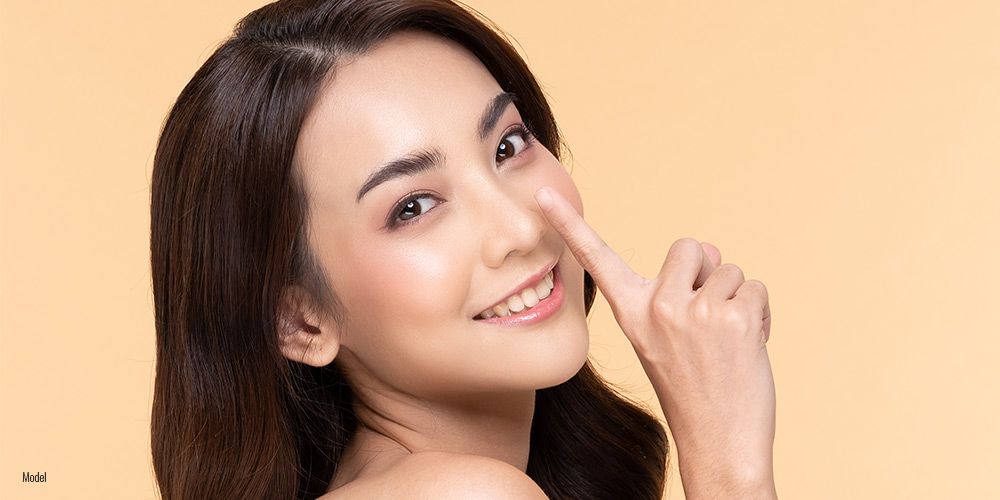
Below is a list of the absolute DON’Ts of rhinoplasty; things that patients should always avoid while recovering from this transformational procedure. While all surgeons provide detailed instructions, this list contains some of the most popular requirements.
5 Min Read:
The Rules of Rhinoplasty: Non-Negotiables
Rhinoplasty recovery is not for the faint of heart. It has the longest total recovery time of any facial procedure, with the most limitations for the patient throughout the recovery period, as the manipulation of bone and cartilage requires careful protection. However, rhinoplasty results are well worth the wait, as this procedure provides some of the most stunning outcomes that can transform the patient’s whole facial aesthetic.
Your facial plastic surgeon will provide you with their unique rhinoplasty recovery guidelines, but we’ve compiled a list of the most common—and important—rules to live by as you recover from rhinoplasty.
What NOT to do after rhinoplasty:
1. Strenuous Activities
After rhinoplasty, your main priorities should be getting as much rest as possible and protecting your surgical site. Rhinoplasty involves the manipulation of bone, tissue, cartilage, and skin and results in a lot of swelling and some discomfort. Engaging in strenuous physical activity, such as going to the gym, running, playing contact sports, or anything that requires you to exert a lot of energy, puts you in the danger zone.
For one thing, you’re putting yourself in a position to get hurt. A stray ball or elbow could mean blinding pain, injury, and the potential reversal of your results. Additionally, you’re robbing your body of precious energy that should be spent on healing your nose—we heal best when we’re sleeping, but keeping to low-key activities is also crucial.
2. Sleep on Your Stomach or Side
Sleep is one thing, restful sleep is another. After rhinoplasty, you need to sleep on your back with your head slightly elevated. This does a few things: your elevated head allows fluids to drain more effectively while also reducing swelling, which can greatly help your discomfort.
Sleeping on your back also ensures that you don’t squish your nose while you sleep. Stomach sleeping or side sleeping puts pressure on the nose, which can be painful and cause adverse effects after rhinoplasty. Use pillows to prop yourself up and as a barrier around you so that you don’t accidentally roll over in your sleep. It can be helpful to practice back sleeping prior to your surgery, as accidental side or stomach sleeping is not worth the risk.
3. Touch Your Nose
This includes blowing your nose, picking it, and messing with the bandages or splints—never touch your nose after rhinoplasty! Until your surgeon clears you to do so, that nose is under construction and is not meant to be disturbed.
After rhinoplasty, the tissues, blood pressure, and blood flow in the nose are very delicate and can easily be affected. Touching, moving, or putting pressure on the nose (via blowing it or otherwise) can result in more swelling, bruising, and even infection. It will be very tempting because you’ll feel like your nose is constantly stuffy due to swelling, but you have to refrain. The worst of this discomfort is usually over by the first or second week, so stay strong!
4. Get Sick
Ok, we know it’s not always in your control, but do your very best not to get sick before or during your recovery period. Practice social distancing when you know someone else is sick and wash your hands regularly as precautionary measures because being sick with a cold while healing from rhinoplasty is no fun at all and can have serious ramifications.
Nasal congestion from illness can cause the nose and nasal passages to swell and add to your discomfort tenfold. Additionally, any type of infection can impact the healing process. If you are prone to seasonal allergies, discuss your options with your surgeon and let them know so they can advise on the use of antihistamines or other options.
5. Wear Glasses
Glasses wearers, it might be time to swap for contact lenses for a while. Glasses put pressure on the healing tissues and cartilage of the nasal bridge, which can affect healing. Because the nasal bones and cartilage are very soft in the early healing stages, glasses or sunglasses can create an indentation on the healing area, affecting results. You’ll have to do without for a few weeks.
6. Eat Junk Food
It’s no secret that whole, nutritious foods are the key to a healthy body, and they can also help speed up recovery. While it may be tempting to order takeout (you’re going to be tired), this is not the way to go. We suggest preparing ahead of time with healthy meal prep to ensure you are getting enough vitamins and healthy fats as you heal.
You should also avoid spicy or crunchy foods that may affect your nasal region—and always drink plenty of water.
7. Drink and Smoke
Nicotine and alcohol are strictly prohibited as you heal from rhinoplasty, as they can drastically affect healing, interact poorly with other medications, and thin the blood. Recreational drugs, too, must be avoided during this time, as they are dangerous to your health and can interact with blood circulation and hydration.
Your best bet is to adhere to your surgeon’s aftercare instructions and don’t ingest anything that isn’t approved by them.
Want to Learn More About Rhinoplasty in Beverly Hills, CA?
Dr. Jason B. Diamond is Beverly Hills’ premier facial plastic surgeon and can help you reach your aesthetic goals in safety and comfort with rhinoplasty. To learn more about this procedure and to schedule a consultation with Dr. Diamond, call (310) 859-9816 or fill out the online contact form to get started today.

